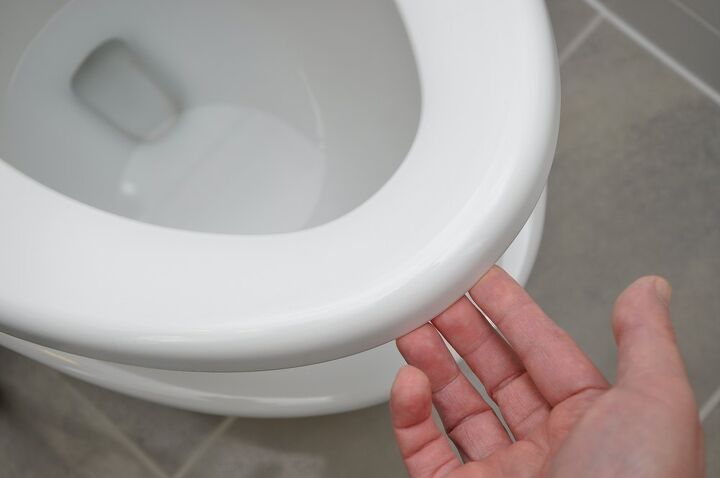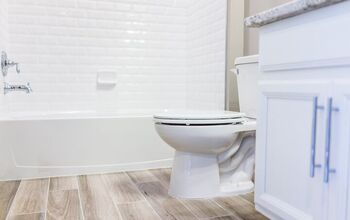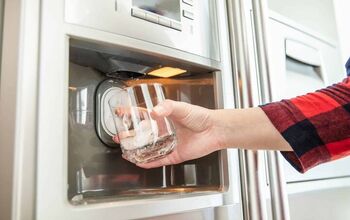Wooden Vs. Plastic Toilet Seats: Which One Is Better?

You may think that the decision between various toilet seats doesn’t really matter. But in reality, you’re going to be sitting on it every single day, so it’s something you should think about! Wood and plastic are the two most common materials for toilet seats, but which is best?
Plastic toilet seats are generally preferable over wooden toilet seats, thanks to their low cost, durability, and zero-maintenance design. Plastic toilet seats are easy to clean, match any color of bathroom decor, and have a simple, streamlined appearance. Plus, you don’t have to worry about them becoming damp or smelly since they’re nonporous.
On the other hand, wooden toilet seats are prone to cracking and warping due to fluctuating temperatures and moisture. They must be resealed regularly, or you run the risk of having a permanently damp or smelly toilet seat. Wooden toilet seats are also more expensive than plastic ones.
Do You Need Appliance Repair Services?
Get free, zero-commitment quotes from pro contractors near you.

How Are Wooden Toilet Seats Made?
Wooden toilet seats are made from molded wood and finished with a laminate or another form of sealant. Wood flour is mixed with a thermosetting resin. Then, it is compression molded to the shape and size of a toilet seat.
Pros of Wooden Toilet Seats
For some, a benefit of wooden toilet seats is their appearance. Wooden toilet seats are also heavier than plastic ones, which can indicate quality. Plus, properly sealed wooden toilet seats don’t get as cold during the winter months.
Cons of Wooden Toilet Seats
There are several downsides to choosing a wooden toilet seat. First, fluctuating temperatures and moisture in the bathroom can cause them to crack and warp. Letting a wooden toilet seat fall shut can result in it breaking on impact.
Wooden toilet seats must be resealed on a regular basis. Otherwise, they will quickly fall prey to mold and nasty smells. Since wood is porous, a wooden toilet seat that isn’t well-maintained is prone to being permanently damp.
In addition, the popular “soft-close” feature typically found on plastic toilet seats is not available for wooden toilet seats. This is due to the heavier weight of the wood.
How Are Plastic Toilet Seats Made?
Most plastic toilet seats are made from polypropylene. This material is melted and then injected into a mold. Once inside the mold, it cools and takes on the shape and size of the mold.
Pros of Plastic Toilet Seats
One of the biggest pros of plastic toilet seats is their durability. They’re much less likely to crack or break than wooden toilet seats. They’re also extremely low-maintenance and easy to clean.
Unlike wooden toilet seats, plastic toilet seats aren’t porous. Instead, any moisture sits on top of the plastic and can be easily wiped away. Therefore, you won’t be left with a permanently damp or smelly toilet seat.
Plus, many plastic toilet seats have a soft-close feature that prevents them from loudly slamming shut. This is a very convenient feature that also provides additional protection for the toilet seat.
Cons of Plastic Toilet Seats
A downside of plastic toilet seats is that they can be uncomfortably cold in the winter months. You can purchase a heated plastic toilet seat, but they tend to be expensive. In addition, plastic toilet seats are prone to discoloration over time.
Wooden vs. Plastic Toilet Seats: Evaluation Criteria
Appearance
Which is better when it comes to appearance, wooden toilet seats or plastic toilet seats? It’s really up to personal preference.
Some prefer the simple, understated look of a plastic toilet seat. Others think that wooden toilet seats have a more refined appearance.
Do you like the feel of a wooden seat and the look of a plastic seat? You can purchase a wooden seat that is painted white. The opposite applies as well: You can also paint a plastic toilet seat to look like wood.
Cost
Wooden toilet seats tend to be more expensive than plastic ones, with many ranging between $80 and $100. Meanwhile, plastic toilet seats can be as cheap as $10, with the average seat around $30.
Cleanliness
A finished and well-maintained wooden toilet seat is just as sanitary as a plastic toilet seat. However, if your wooden toilet seat is unfinished, the porous material will absorb moisture and bacteria. This can quickly lead to unwanted odors and a permanent damp feeling.
For a clean and sanitary wooden toilet seat, you’ll need to reapply laminate or another sealant periodically. Meanwhile, plastic toilet seats are not porous, and they don’t wear down over time. They are easy and quick to clean and typically don’t require any maintenance.
Comfort
Sitting on a wooden toilet seat isn’t all that different from sitting on a plastic toilet seat. However, you may notice a bit of a difference in the colder months of the year. Wooden toilet seats don’t tend to get as cold as plastic ones do.
In addition, cheaper plastic toilet seats can feel a bit flimsy. Wooden ones, however, generally feel solid and sturdy.
Durability
Both wooden and plastic toilet seats are hard to break. Overall, though, wooden toilet seats are sturdier, thicker, and heavier. The problem is that the finish on wooden toilet seats wears off over time, causing issues like warping.
Because of the risk of warping and cracking with wooden toilet seats, plastic ones are considered more durable. For both, it’s recommended to replace your toilet seat every five to seven years.
How To Install A Toilet Seat
Installing a new toilet seat is an easy DIY project. It only requires a few tools and about 15 minutes of your time.
Step 1: Measure Your Toilet Seat
First, you’ll need to measure your old toilet seat using a tape measure. Measure the space between the bolts where the toilet seat attaches to the toilet; the standard is 5.5 inches. Next, measure the bowl at its widest point.
Finally, measure the length of the bowl from the bolts to the outer edge of the front of the bowl. Most round bowls will be around 16.5 inches, while elongated bowls are about 18 to 18.5 inches.
Write down your measurements and bring them along to the store or refer to them while shopping online. This way, you’re sure to buy a toilet seat that will fit your toilet.
Step 2: Choose Your New Toilet Seat
Maybe you’ve chosen a wooden toilet seat, or perhaps you’ve gone with a plastic one. Either way, be sure to double-check the dimensions of your new toilet seat before purchasing.
Step 3: Remove The Old Toilet Seat
Before removal, thoroughly clean the old toilet seat, the toilet bowl, and the rim of the toilet. Then, remove the bolt covers using a screwdriver. Locate the nuts that attach to the bolts and remove them using an adjustable wrench.
Now you’re ready to lift the old toilet seat and its hinges from the toilet!
Step 4: Position The New Toilet Seat
Take the new toilet seat out of the packaging and ensure all the necessary hardware is included. Set the seat on top of the toilet rim, aligning the new hinges over the holes for the bolts. Use a level to ensure the toilet seat is even.
Step 5: Install The New Toilet Seat
Feed the bolts through the holes in the hinges and toilet bowl with the head of the bolt on top. Attach the nuts to the other side and tighten them by turning them clockwise with a wrench. If plastic covers are included, snap them on top of the hinges.
Confirm that the seat is secure by opening and closing the lid and jiggling the seat. That’s all there is to it–your new toilet seat is installed and ready to go!
Related Questions
Are toilet seats universal?
Toilet seats are not universal. They come in many different shapes and sizes. Before you choose a new seat for your toilet, make sure you have the correct measurements.
Are toilet seat covers flushable?
Most toilet seat covers are flushable. The disposable toilet seat covers often found in public restrooms can be flushed, for example. However, decorative toilet seat covers should not be flushed.
Are toilet seat covers out of style?
Not only are toilet seat covers out of style, but they’re also extremely unsanitary. Give your bathroom a quick and easy upgrade by throwing out your toilet seat cover. If you have a rug that goes around the base of your toilet, it’s best to get rid of that too!
Do You Need Appliance Repair Services?
Get free, zero-commitment quotes from pro contractors near you.

Wooden vs. Plastic Toilet Seats: The Final Verdict
Overall, plastic toilet seats are a better choice for your bathroom than wooden toilet seats. Plastic toilet seats are more affordable, easier to clean, and don’t require any maintenance. They’re nonporous, so you don’t have to worry about them absorbing any moisture.
Plus, plastic toilet seats aren’t prone to warping or cracking. They often have a convenient soft-close mechanism that keeps them from loudly slamming closed. Their simple, no-frills appearance is sure to fit right in with any style of bathroom decor as well.
Wooden toilet seats are still durable, but they require more maintenance. They’re still a good choice, but just keep in mind that you’ll have to take care of them. Nobody wants to sit on a smelly or damp toilet seat!
Related Guide

With a lifelong passion for writing plus strong enthusiasm for home improvement and DIY projects, joining the team at Upgraded Home was an easy choice. Jessica Allen likes to share helpful information with current and aspiring homeowners. Aside from writing, Jessica loves doing yoga, playing the piano, and dabbling in graphic design.
More by Jessica Allen



























